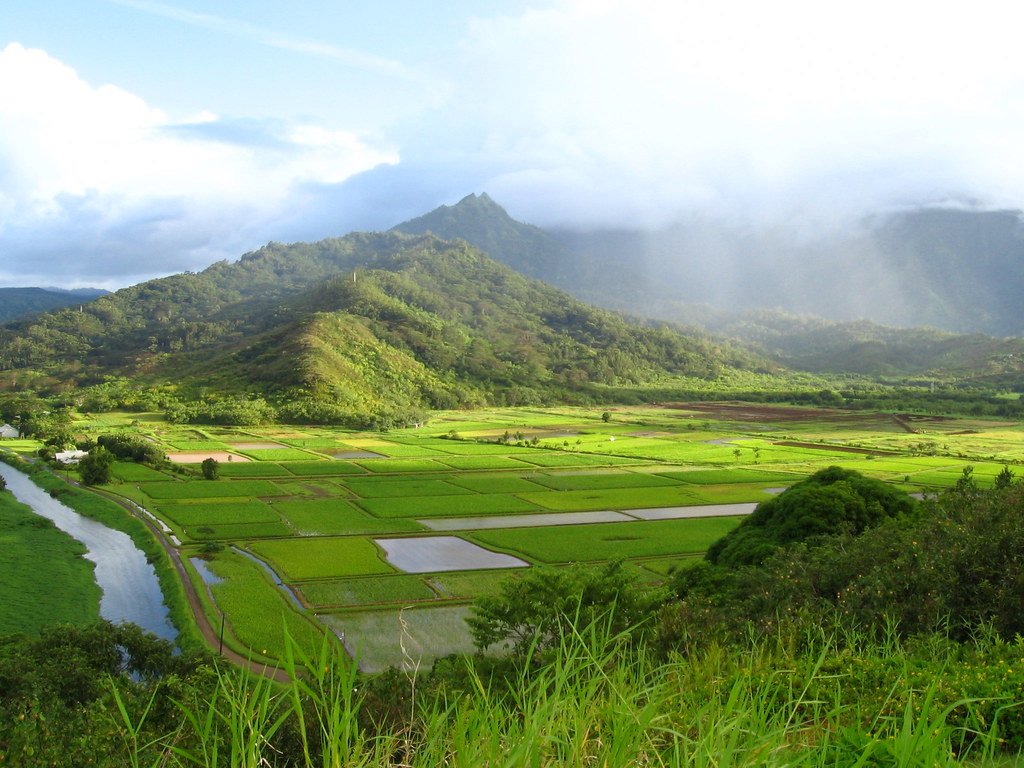夏威夷自6月中起成為全美第一個禁用農藥陶斯松的州。陶斯松具有神經毒性,與哮喘和癲癇有關,有損害兒童腦部發育的風險。
州長大衛井下6月15日簽署了SB 3095號法令,7月生效,將在2019年1月之前部分禁用陶斯松。任何想繼續使用陶斯松的人,必須向國家申請豁免,2022年後不再給予豁免,2023年開始全面禁止使用含有陶斯松的農藥。
新法並在學校周圍規劃了100英尺的零噴灑緩衝區,並要求大規模使用者揭露他們噴灑的是何種「限制性使用」農藥(Restricted Use Pesticides)。
強制報告和零噴灑區的新規定為立即生效,不予豁免。
井下說:「保護孩子和居民的健康和安全是我的首要任務之一。我們必須保護社區免受可能有害化學物威脅。同時,夏威夷的農業對我們的國家和經濟來說非常重要。我們將與農業部、地方農民和夏威夷大學合作,尋求安全的替代性害蟲管理工具,以支持和維繫往後世世代代的農業。」
國家有毒物質管理局(Agency for Toxic Substances)警告:「吸入或攝入陶斯松可能導致各種神經系統問題,包括頭痛、視力模糊、流涎到抽搐、昏迷和死亡,取決於暴露量和時間長短。」
陶斯松廣泛用於家庭和農場。在家中多用來控制蟑螂、跳蚤和白蟻,也用於一些寵物跳蚤和蝨子項圈。在農場裡則是噴灑使用,控制牛蜱蟲和防治作物害蟲。
陶斯松是一種白色結晶狀固體,具有強烈的氣味,難溶於水,所以在用於農作物或動物之前常與油性液體混合,或是以膠囊形式用於作物。由於陶斯松對人體健康的潛在影響,歐巴馬任內的環保局(EPA)建議全面禁用於農業,但遭川普的環保局長普魯特於2017年3月推翻。
SB 3095號法令是夏威夷歷史的新頁,當地居民們一再要求政府嚴加管制農藥。全世界最大的農用化學品公司,就在夏威夷進行實驗和開發基因工程作物。
由於這裡的作物基改工作大多以耐除草劑為目的,測試和開發時會反復噴灑有毒化學物質,許多相關活動與學校和住宅區相鄰,將兒童和公共衛生置於險境。
企業自主報告的農藥使用資料顯示,這些公司每年在夏威夷噴灑數千加侖或磅的限制性使用農藥。
華盛頓非政府組織食品安全中心(Center for Food Safety,CFS)為SB 3095號法令提供了法律和政策援助,包括起草、遊說,並鼓勵民眾參與立法過程。
CFS也發表了有史以來首個農藥使用與夏威夷基因工程作物田間試驗間關係的分析報告。
CFS執行主任坎貝爾(Andrew Kimbrell)說:「夏威夷禁用陶斯松,將普魯特的EPA拒絕採納的措施付諸行動,提供兒童更好的保護,並提高農藥政策的透明度。」
坎貝爾認為其他州也將陸續跟進。
Hawaii is making history. Ten days ago the island state became the first to ban the pesticide chlorpyrifos, a neurotoxin linked to asthma and seizures that damages brain development in children.
Governor David Ige signed SB 3095 into law on June 15. The law goes into effect in July and will impose a partial ban on chlorpyrifos by January 2019. Anyone who wishes to continue using chlorpyrifos may do so only by applying for an exemption with the state. No exemption will be granted after 2022, and the use of pesticides containing chlorpyrifos is completely banned starting in 2023.
The new state law creates 100 foot no-spray buffer zones around schools and requires large-scale pesticide users to disclose the Restricted Use Pesticides they are spraying.
The mandatory reporting and no-spray zone provisions are effectively immediately with no exemptions.
Governor Ige said, “Protecting the health and safety of our keiki [children] and residents is one of my top priorities. We must protect our communities from potentially harmful chemicals. At the same time, Hawaii’s agriculture industry is extremely important to our state and economy.”
“We will work with the Department of Agriculture, local farmers and the University of Hawaii as we seek safe, alternative pest management tools that will support and sustain our agriculture industry for generations to come,” the governor said.
The national Agency for Toxic Substances warns, “Breathing or ingesting chlorpyrifos may result in a variety of nervous system effects, ranging from headaches, blurred vision, and salivation to seizures, coma, and death, depending on the amount and length of exposure.”
Chlorpyrifos has been widely used in homes and on farms. In the home, it is used to control cockroaches, fleas, and termites; it is also used in some pet flea and tick collars. On the farm, it is used to control ticks on cattle and as a spray to control crop pests.
Chlorpyrifos is a white crystal-like solid with a strong odor. It does not mix well with water, so it is usually mixed with oily liquids before it is applied to crops or animals. It may also be applied to crops in a capsule form.
The pesticide’s fearsome health effects led the U.S. Environmental Protection Agency, EPA, under the Obama Administration to propose banning all of its agricultural uses, but the current administrator, Scott Pruitt, reversed this pledge in March 2017.
SB 3095 marks a new chapter for Hawaii residents, who have repeatedly demanded protection against pesticides. The world’s largest agrochemical companies experiment and develop their genetically engineered crops in Hawaii.
Because the majority of these crops are engineered to resist herbicides, testing and development of these crops results in repeated spraying of toxic chemicals. Many of their operations are adjacent to schools and residential areas, putting children and public health at risk.
Voluntarily reported pesticide use data shows that these companies apply thousands of gallons and pounds of Restricted Use Pesticides in Hawaii each year.
The Center for Food Safety, CFS, provided legal and policy assistance to this effort. The Washington, DC-based NGO helped draft SB 3095, lobbied for its passage, and encouraged public participation in the legislative process.
CFS also published the first-ever analysis of pesticide use data and its relationship to field trials of genetically engineered crops in Hawaii.
Andrew Kimbrell, executive director of Center for Food Safety, said, “Hawaii is taking action that Pruitt’s EPA refused to take by banning chlorpyrifos. Hawaii is courageously taking the first step towards pesticide policies that will provide for more protection for children as well as more transparency.
Kimbrell believes that other states will follow Hawaii’s lead.
※ 全文及圖片詳見:ENS











